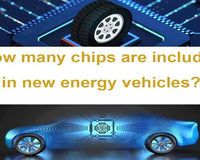
The ECU communicates with various sensors (like oxygen, coolant, and throttle) and actuators (such as fuel injectors and ignition coils) using a complex electrical system. A malfunction in these connections can disrupt this communication, leading to performance dips and even complete engine failure.
Finding the core cause of ECU wiring problems requires a systematic approach to diagnosis. Here’s a detailed how-to:
Step 1: Visual Inspection
Visually inspect the ECUs, connectors, and wiring for damage, corrosion, or loose connections.
Step 2: Use an OBD-II Scanner
Use an OBD reader to retrieve error codes. This will give you a starting point for investigating potential wiring problems.

Step 3: Check Voltage and Continuity
Verify the voltage and continuity of the concerned wires with a digital multimeter.

Step 4: Inspect Connectors
Look for any indications of rust, bent pins, or loose connections on the connectors. As needed, clean and make repairs.
Step 5: Consult Wiring Diagrams
For comprehensive wiring diagrams, consult the vehicle’s service manual. These schematics allow you to trace the circuits and find any possible problems.
Using sophisticated diagnostic and repair methods for intricate ECU wiring problems could be necessary. Here are a few more techniques:
Oscilloscope Testing
An oscilloscope allows for real-time signal monitoring from various sensors and actuators. This aids in locating any anomalies in the signal patterns that may point to problems with the wiring.

Thermal Imaging
Thermal imaging cameras can detect hotspots in the wire harness, which represent regions of high resistance or short circuits. This non-invasive procedure allows for the quick identification of problem regions.

ECU Bench Testing
It might occasionally be necessary to test the ECU independently of the car. Bench testing entails attaching the ECU to a test rig that replicates the inputs from sensors and actuators to perform comprehensive diagnostics.
Diagnostic Tools You’ll Need
Fixing ECU Wiring Issues.
It’s time to fix the bad wires or connections once you’ve located them. Here’s how to do it:
Step 1: Repair or Replace Damaged Wires
You can splice the wire if there is not much damage. After cutting off the damaged part, firmly attach the new wire using heat shrink tubing and solder. In cases of significant damage, it is advisable to replace the entire wire. Make sure the wire you use is the same type and gauge as the original.
Step 2: Secure Loose Connections
Make sure that every connector is firmly and correctly placed. Replace the broken or loose connections with new ones.
Step 3: Protect the Wiring
Use Conduit or Wiring Loom: Cover the wiring with a conduit or wire loom to shield it from heat and physical harm.
Step 4: Perform a Final Inspection
Do a final check after fixing or replacing the wires to ensure everything is safe and connected correctly. Then, reconnect the battery and start the engine to ensure there are no lingering problems.

Although a variety of engine performance difficulties may be traced back to ECU wiring faults, these issues can be successfully fixed with rigorous diagnostics and the proper repair methods. Check the wire harness and connectors for wear and damage regularly. Deal with any problems as soon as possible to prevent further damage.guaranteeing your car’s smooth and dependable operation.










